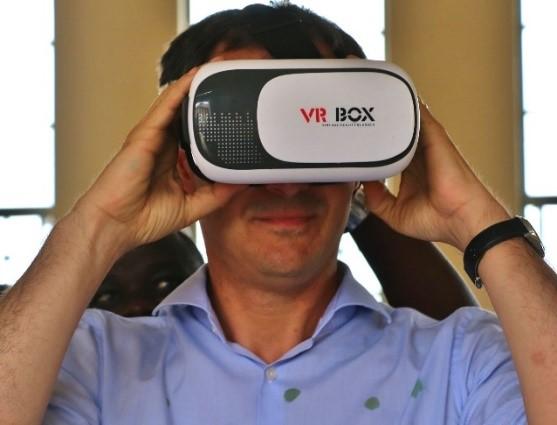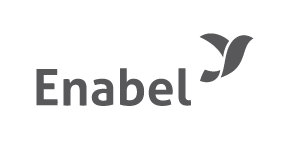Digitalisation for education (D4E) - Piloting of a VR Skills Channel
11 August 2017
Background
Many employers in Uganda have raised concerns about the quality of graduates from technical and vocational institutes saying that they lack the necessary skills and attributes expected in a work environment.
In response, the government of Uganda developed a ten-year Business, Technical, Vocational Education and Training (BTVET) strategic plan, dubbed 'Skilling Uganda' (SU). It aims to install a comprehensive system of skills development for employment, enhanced productivity and growth. The main objective of the strategy is to create employable skills and competencies relevant in the labour market.
The Belgian Development Agency is one of the partners supporting the implementation of this strategy through a project called 'Support to Skilling Uganda' (SSU).
Work-based learning
Key on the Skilling Uganda agenda is closing the gap between the world of training and the world of work. The project hopes to achieve this through innovative initiatives such as work-based learning. Its aim is to expose trainees to the realities of the private sector in order to learn and develop workplace competencies. Through this work-based learning approach, Skilling Uganda aims to successfully adapt training to labour market needs.
In remote areas, such as the agro-pastoral region of Karamoja in North-Eastern Uganda or the refugee settlements in Northern Uganda, the limited number of companies is a stumbling block to the practice of work-based learning. To address this challenge, BTC Uganda has embraced the use of virtual reality (VR) at grassroots level.
VR to the rescue
To expose students in remote areas to the reality of the world of work, BTC Uganda is developing a VR skills channel. It produces short term ‘how to’ clips to provide viewers with a virtual immersion into real work settings.
In June 2017, VR technology was piloted as an ICT support to a training for hand pump mechanics at the refugee settlements in Northern Uganda. The ambition is to scale up the production of such 'how to' VR clips in the coming months to enhance skills development in a wider set of trades.
How it works
The idea behind the roll-out of this VR pilot is to keep it simple. In practice, only four digital tools are used to carry out the virtual reality experience; a 360° camera, a smart phone, a VR app and VR glasses. The entire VR pilot described here, costs less than 1000€.
Developing a 360° 'How to' clip
UP-STREAM
- Seek company: Liaise with Uganda's exceptional private sector actors to access their facilities such as a workshop, a garage, etc.
- Record 'how to' video clips using a 360° camera: Focus on specific trades and concentrate on a particular activity with well-defined learning outcomes.
- Inject spatial media metadata: Add metadata to a video file to achieve a 360° effect.
- Upload on YouTube 360° channel: YouTube automatically uploads film as a 360° video because of the injected metadata.
- Download videos on micro SD card ensuring offline access to VR clips.
- Watch in class: Trainees can watch the videos in class as teaching aids through the use of simple VR glasses or a Google cardboard.
Immersion into a trade. The VR technology creates an immersion effect that helps viewer’s feel as if they are physically present at the sites where the action in the video took place. This gives the users an insight into what happens in a ‘first class’ workshop; projecting the viewer straight into the kitchen of a five-star hotel or the garage of a recognized brand.
Teaser and fun to watch. It attracts youth, grabs their attention and gives them a playful way out of their daily environment such as refugee settlement.
Where?
To ensure a sustainable access to the ‘how to’ clips, an openly accessible, reliable and free of cost VR repository is required, ideally based on an open source platform. For this pilot, the YouTube 360° channel was chosen.
By simply uploading the ‘how to’ clips on YouTube 360 and by labelling them with specific hashtags such as #VRskillsChannel #SkillingUganda and e.g. #WaterPumpMechanics #MotorVehicleMechanics, a Skilling Uganda environment is created.
Who?
BTC Uganda works closely with industry players of the Ugandan private sector to make this a reality. These local actors are recognized as champions of industry in Uganda. Bottom-up production of videos enables public-private partnerships between training providers and companies and allows for recognition of local champions (product placement).
The skills development trainees or anyone interested in a certain skillset can access the VR 'how to' clips of their choice anywhere at any time by simply filtering on the hashtags, hereby entering a Ugandan virtual learning environment.
For off-the-grid classroom use in remote areas such as refugee settlements, the clips are preselected and preloaded on a number of devices.
So far, the following productions are available.
Pump Assembly
https://www.youtube.com/watch?v=oGW0RzOzCfM&t=83s #WaterPumpMechanics #VRskillsChannel #SkillingUganda
Process of liquid soap making
https://www.youtube.com/watch?v=gkp1p8B_eKM #LiquidSoapMaking #VRskillsChannel #SkillingUganda
Motor Vehicle Repair
https://www.youtube.com/watch?v=ngQDT0A_ClQ #MotorVehicleMechanics #VRskillsChannel #SkillingUganda
What?
The pilot plans to build a repository of VR work-based learning through a set of 'how to' clips. This shall be done in a number of trades in Uganda, including but not limited to;
- Green skills: Fuel/energy efficient stoves, briquette making, electronics repair, forestation /tree nursery bed management
- Agriculture: Organic pesticide and fertilizer production, fruit vegetables production and processing, post-harvest handling/ value addition in agriculture, basics of animal health management, bee keeping and value addition to honey bee products, fish processing, and handling
- Construction: Masonry/brick laying, tile and glass fitting, plumbing, painting and decoration/interior designing, landscaping and gardening.
- Handcraft: Ceramic production, weaving and mat making, leather work and shoe making, tailoring and garment cutting, manufacturing, tin smiting, black smithing, entrepreneurship skills training. Hair dressing/ barber, car washing, car battery charging and repair, soap making, baking, photography and audio production.
Latest news from this project
No news

